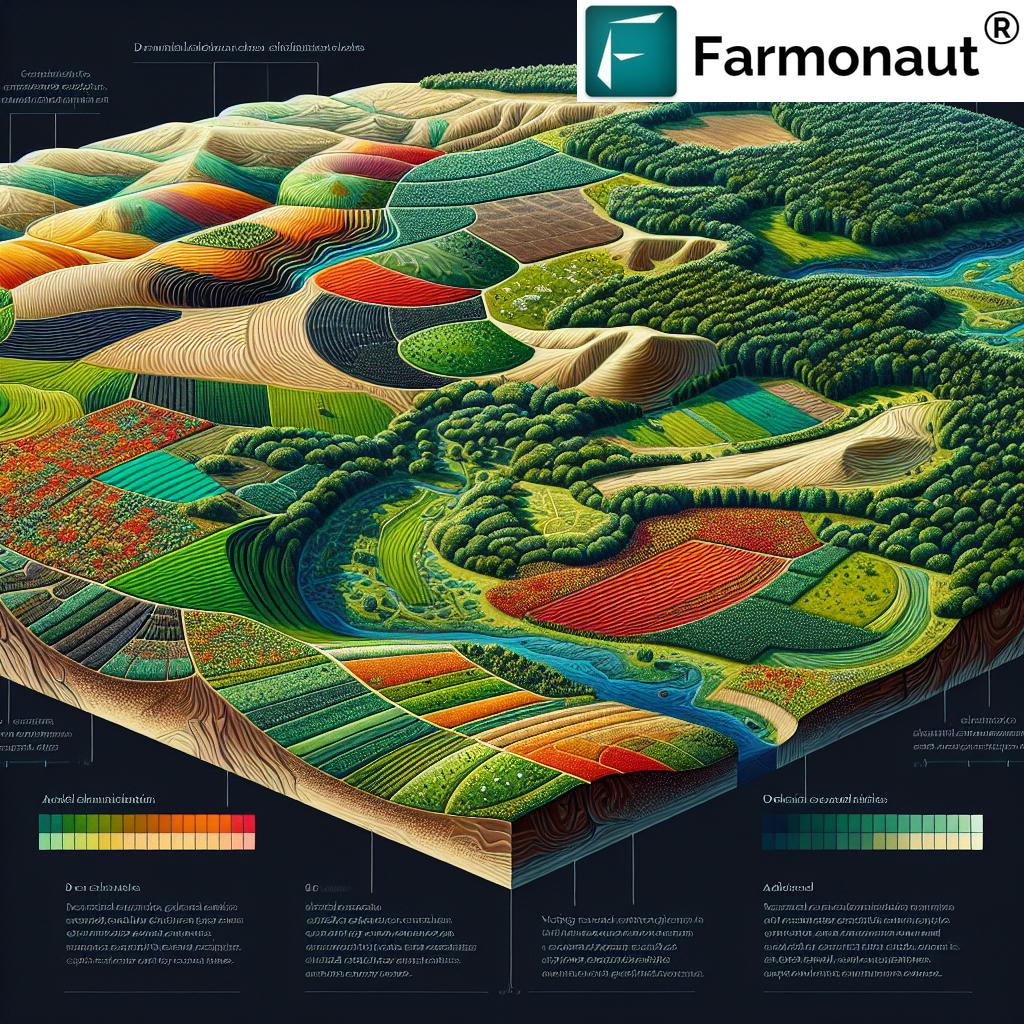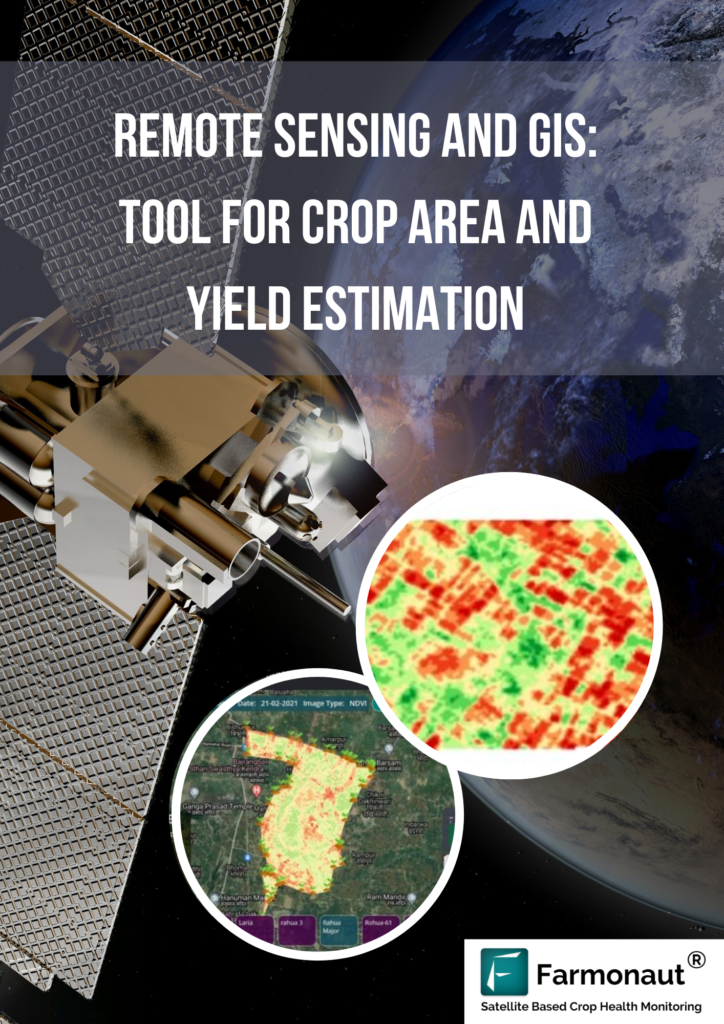17 Essential Plant Nutrients & Their Functions Explained: The Ultimate Guide for Sustainable Agriculture in 2025
“Trivia: Plants require 17 essential nutrients for optimal growth—14 from soil, and 3 (C, H, O) from air and water.”
Summary: Essential Nutrients in Plants for Sustainable Agriculture in 2025
Modern agriculture is built upon understanding the essential nutrients in plants and essential plant nutrients and their functions. As global population grows, sustainable agriculture practices are increasingly vital to meet crop yield demands while maintaining soil and environmental security. Healthy development in plants depends on a balanced supply of 17 essential plant nutrients—each with a unique role in physiological processes such as photosynthesis, protein synthesis, enzymatic activation, and growth regulation.
This comprehensive guide explores the categories of macronutrients and micronutrients, details their functions, deficiency symptoms, and shares strategies for optimal management—paving the way towards sustainable food production for 2025 and beyond.
The Concept of Essential Nutrients: What Makes a Nutrient Essential for Plant Growth?
Essential nutrients in plants are elements required for plants to complete their life cycle—from germination and **growth** through **development** and **reproduction**—without which they will **negatively** impact plant health and yield. A nutrient is considered essential if:
- The **plant** cannot complete its life cycle without this **element**.
- Its absence causes **deficiency symptoms** and impaired **growth** or **reproduction**.
- The **nutrient** has a direct **physiological role** and is not replaceable by another element.
Plants derive nutrients from different sources—mainly the soil (minerals, water) and the atmosphere (carbon dioxide, water vapor). Deficiencies can be caused by poor soil conditions, over-cropping, or climate variability. For optimal growth and sustainable agriculture in 2025, **farmers**, agronomists, and researchers must understand the critical balance of these 17 essential plant nutrients macro and micro.
Farmonaut Web System Tutorial: Monitor Crops via Satellite & AI
Macronutrients: Building Blocks of Plant Growth
Macronutrients are required by plants in larger quantities as they serve as the **building blocks** for major molecules involved in growth, development, and energy transfer. There are **six primary** (N, P, K, Ca, Mg, S) and **one secondary** group (C, H, O), together described as macronutrients. Each of these has specialized functions and is essential to crop productivity and food security.
Primary Macronutrients (N, P, K)
- Nitrogen (N): Vital for amino acids, proteins, chlorophyll synthesis, and overall vegetative growth. Deficiency leads to stunted growth and yellowing of leaves.
- Central for energy transfer, and building DNA/RNA (nucleic acids).
- Key for photosynthesis and rapid crop canopy development.
- Phosphorus (P): Integral to energy transfer (ATP), formation of nucleic acids, root development, enhances flowering and fruiting.
- Important in seed formation and early growth vigor.
- Potassium (K): Regulates enzyme activation, water uptake, and improves drought tolerance and disease resistance.
- Crucial for stomatal operation and transport of nutrients within the plant.
Secondary Macronutrients (Ca, Mg, S)
- Calcium (Ca): Vital in cell wall structure, membrane function, and as a messenger in signaling pathways.
- Deficiency leads to leaf tip burns and blossom-end rot in fruits.
- Magnesium (Mg): The central atom in the chlorophyll molecule, key for energy harnessing in photosynthesis.
- Activates over 300 plant enzymes. Deficiency often appears as yellowing between veins.
- Sulfur (S): Important component of key amino acids (cysteine, methionine), vitamins, and protein synthesis.
- Deficiency results in pale young leaves and weak stems.
Universal Macronutrients (C, H, O)
- Carbon (C), Hydrogen (H), & Oxygen (O): Make up over 90% of a plant’s dry weight. Though not derived from soil, they are essential for the structure of organic molecules (carbohydrates, proteins, fats).
- Supplied through carbon dioxide (air), and water (rainfall, irrigation).
- Allow for creation of energy (respiration/photosynthesis).
The right balance of these macronutrients enables optimal plant growth, high yields, and resilience against environmental stress.
Plant Magnesium Deficit: Symptoms, Causes, and Control Measures for Healthy Crops
Micronutrients: Tiny Amounts, Massive Impact
While macronutrients form the bulk of a plant’s nutrition, micronutrients are equally essential but are required in trace quantities (parts per million or even less). These elements play crucial roles in:
- Activation of enzymes
- Respiration and metabolism
- Photosynthesis, DNA formation, and hormonal regulation
- Disease resistance and plant vigor
There are **nine key micronutrients** necessary for healthy plant growth:
- Iron (Fe): Key for chlorophyll synthesis and electron transport in photosynthesis.
- Deficiency: Interveinal chlorosis (yellowing) of new leaves.
- Manganese (Mn): Involved in photosynthesis, nitrogen assimilation, and metabolism.
- Deficiency: Grey specks, leaf bleaching.
- Zinc (Zn): Necessary for enzyme function, protein synthesis, and hormone (auxin) production.
- Deficiency: Reduced internode length, distorted leaves.
- Copper (Cu): Important in photosynthesis, respiration, and lignin synthesis.
- Deficiency: Dieback of stems, pale leaves.
- Boron (B): Required for cell wall formation and reproductive development.
- Deficiency: Poor flowering and fruit set.
- Molybdenum (Mo): Needed for nitrogen fixation (mainly legumes), nitrate reduction.
- Deficiency: Marginal leaf necrosis, stunting.
- Chlorine (Cl): Assists in osmosis, ionic balance, and photosystem II.
- Deficiency: Wilting, chlorosis, reduced growth.
- Nickel (Ni): Component of urease enzyme (involved in nitrogen metabolism).
- Deficiency: Urea toxicity symptoms, leaf necrosis.
- Cobalt (Co): Crucial (mainly) for nitrogen-fixing leguminous plants.
- Deficiency: Poor nitrogen fixation in legumes.
Though micro in amount, balanced micronutrient supply is key to optimal crop yields and sustainable nutrient management.
Smart Farming Future: Precision Tech & AI: Boosting Harvests, Enhancing Sustainability
“Trivia: Proper nutrient management can increase crop yields by up to 50%, supporting sustainable agriculture for over 9 billion people by 2050.”
Essential Plant Nutrients and Their Functions: Deep Dive
Understanding the role and functions of each essential nutrient in plants is the cornerstone of sustaining soil health, increasing crop yields, and facing the food security challenges of 2025. Here’s how each nutrient supports plant life:
-
Nitrogen (N): Boosts leafy growth, enhances chlorophyll synthesis for photosynthesis, and is vital in building proteins and nucleic acids.
Functions: Rapid vegetative development, lush canopy;
Deficiency: Pale yellow leaves, weak stems;
Importance in 2025: N management helps reduce environmental pollution and ensures optimal crop growth. -
Phosphorus (P): Drives energy transfer (ATP/ADP) and is required for all major energy-intensive physiological processes including root growth, early maturity, fruit, and seed formation.
Functions: Enabling root growth, flowering, and fruiting;
Deficiency: Purplish leaves, poor seed and fruit set;
Importance: Sustainable P use is crucial as reserves are finite. -
Potassium (K): Regulates cell turgor, enzyme activation, promotes stomatal opening and closing (water balance), and boosts drought and disease resistance.
Functions: Water regulation, enzyme efficiency, strong stems;
Deficiency: Leaf margin scorch, weak stalks, poor stress response. -
Calcium (Ca): Maintains cell wall stability, assists in cell division, growth, and acts as an intracellular messenger in stress and hormone signaling.
Functions: Root/shoot growth, cell integrity;
Deficiency: Tip burns, fruit/flower rot, root stunting. -
Magnesium (Mg): The central atom in chlorophyll molecules; also activates enzymes for energy and sugar movement.
Functions: Photosynthesis, green color, enzyme processes;
Deficiency: Interveinal chlorosis, low productivity. -
Sulfur (S): Required for synthesis of certain amino acids (methionine, cysteine), vitamins, and cofactors; regulates protein formation.
Functions: Protein synthesis, chlorophyll formation;
Deficiency: Light green/yellow young leaves. -
Iron (Fe): Needed for synthesis of chlorophyll, functions as an electron carrier in photosynthesis and respiration.
Function: Essential for photosynthetic enzymes;
Deficiency: Yellowing, especially in young leaves. -
Manganese (Mn): Plays roles in photosystem II, antioxidant defense, and metabolism of carbohydrates and nitrogen.
Function: Oxygen release in photosynthesis, disease resistance;
Deficiency: Light-green mottling, necrotic spots. -
Zinc (Zn): Vital for hormone (auxin) synthesis, enzyme activation, gene expression, and cell elongation.
Function: Growth regulation, protein synthesis;
Deficiency: Reduced leaf size, short internodes. -
Copper (Cu): Key for enzyme systems, lignin production, and photosynthetic redox reactions.
Function: Disease defense, healthy growth;
Deficiency: Dying back of shoot tips, pale leaves. -
Boron (B): Important in cell wall and membrane stability, sugar transport, and pollination.
Function: Reproduction, seed/fruit formation;
Deficiency: Poor growth point development, sterility. -
Molybdenum (Mo): Responsible for nitrogen fixation (crucial for legumes), formation of vital enzymes (nitrate reductase).
Function: Nitrogen assimilation;
Deficiency: Poor growth in legumes, leaf mottling. -
Chlorine (Cl): Aids in osmotic and ionic regulation, photosystem II activity.
Function: Root/shoot growth, disease suppression;
Deficiency: Wilting, leaf bronzing, slowed growth. -
Nickel (Ni): Component of urease enzyme, supports nitrogen metabolism.
Function: Urea breakdown, seed germination;
Deficiency: Necrosis in seed tissues. -
Cobalt (Co): Facilitates nitrogen fixation in legumes.
Function: Effective root nodule health.
-
Carbon (C), Hydrogen (H), Oxygen (O): Form the backbone of all **organic molecules** in the plant—carbohydrates, proteins, fats, nucleic acids.
Function: Fundamental for plant structure, energy, and survival. Obtained from CO₂ and H₂O.
Efficient nutrient management is only one part of successful agriculture. For large operations, organized logistics and fleet management are also crucial. Check out Farmonaut’s Fleet Management Platform for optimizing resource allocation, vehicle monitoring, and maximizing agricultural efficiency through satellite insights.
JEEVN AI: Smart Farming with Satellite & AI Insights
Deficiency Symptoms and Diagnosis in Plants
Deficiencies of any essential nutrient can cause significant losses in crop yields, trigger nutrient disorders, and disrupt soil and plant health. Monitoring for early symptoms is vital:
- General: Stunted growth, yellowing (chlorosis), necrosis (dead tissue), poor root or fruit development.
- Specific:
- Nitrogen Deficiency: Older leaves yellow; plant stunts.
- Phosphorus: Purplish leaf veins; delayed maturity.
- Potassium: Leaf margins brown/roll; weak stalks.
- Calcium: Blossom end rot, dying growing tips.
- Magnesium: Interveinal chlorosis in older leaves.
- Sulfur: Overall yellowing, young leaves affected.
- Micronutrients: Symptoms often include mottling, deformities, poor fruit/flower set, and disease susceptibility.
Ensuring the right nutrient supply chain goes beyond soil—traceability is essential from farm to market. Embrace Farmonaut’s Blockchain-Based Traceability for transparency and authenticity in agri-products, supporting sustainable and trusted global markets.
Regenerative Agriculture 2025 ? Carbon Farming, Soil Health & Climate-Smart Solutions | Farmonaut
Sustainable Nutrient Management for 2025 and Beyond
For long-term crop productivity and environmental protection, sustainable nutrient management is more crucial than ever in 2025. This approach is built on understanding essential plant nutrients and their functions, alongside emerging technologies and integrated techniques—combining organic, chemical, and biological inputs for soil health.
Best Practices for Sustainable Agriculture Nutrient Management:
- Soil Testing and Nutrient Mapping: Identify deficiencies and apply fertilizers judiciously.
- Variable Rate Fertilization: Apply the right nutrients, at the right time, in the right place—minimizing waste and runoff.
- Integrated Nutrient Management (INM): Incorporate organic manures/compost, green manures, cover crops, and biofertilizers to build soil organic matter and improve nutrient retention.
- Precision Agriculture: Implement satellite and AI-based field monitoring systems (like Farmonaut) to track real-time crop health, stress, and manage fertilizer inputs efficiently.
- Crop Rotation & Diversification: Break pest/disease cycles and enhance nutrient cycling.
- Climate-Resilient Crop Varieties: Use plant types bred to perform in nutrient-limited or variable conditions.
Climate change, soil degradation, and rising demand for food all increase pressure on nutrient resources. In 2025, we must strive for maximum nutrient efficiency while conserving soil and water for future generations.
Track your farm’s sustainability progress with Farmonaut’s Carbon Footprinting Tools, enabling better decisions on fertilizer use, emission reduction, and soil carbon management—crucial for agri-environmental compliance and profitability.
Farmonaut® Satellite Based Crop Health Monitoring
Interested in integrating satellite-driven nutrient and crop health monitoring into your existing platforms? Access the Farmonaut API or read our Farmonaut API Developer Docs for scalable, real-time agricultural intelligence.
How Farmonaut Supports Sustainable Plant Nutrition & Monitoring
At Farmonaut, we empower farmers, businesses, and governments worldwide with affordable, AI-driven, satellite-based solutions. Our tools help monitor the supply and balance of essential nutrients in plants across vast fields and optimize nutrient management in real time, critical for high yields and environmental responsibility.
- Satellite Monitoring: Track NDVI (Normalized Difference Vegetation Index), crop vigor, nutrient stress, and water use every week with just your mobile or desktop.
- Jeevn AI Advisory: Get custom recommendations that combine field and weather data for optimal macronutrient and micronutrient use.
- Blockchain-Based Traceability: Secure lifecycle tracking for farm products, documenting safe fertilizer and input usage for supply chain transparency.
- Environmental Impact Monitoring: Measure and optimize fertilizer emissions, carbon footprint, and resource management for compliance and sustainability.
We enable **farmers** and agri-professionals everywhere to make smart, sustainable decisions, keeping pace with the challenges of modern agriculture and food security for 2025 and beyond.
Florida Fertilizer Ban 2025 ? 7 Rules to Save Indian River Lagoon & Stop Algae Blooms!
For agribusinesses and commercial growers managing thousands of hectares, Farmonaut’s Large-Scale Farm Management Solutions ensure efficient nutrient scheduling, cross-farm monitoring, and compliance reporting at every scale.
Essential Plant Nutrients: Roles, Deficiency Symptoms, & Sustainable Sources
| Nutrient Name | Type (Macro/Micro) | Primary Function in Plants | Deficiency Symptoms | Required Conc. (mg/kg) | Sustainable Sources/Fertilizers |
|---|---|---|---|---|---|
| Nitrogen (N) | Macronutrient | Amino acids, proteins, chlorophyll synthesis, growth | Yellowing (chlorosis) of older leaves, stunted growth | 10,000–50,000 | Compost, manure, green manures, biofertilizers, controlled-release urea |
| Phosphorus (P) | Macronutrient | ATP/energy transfer, nucleic acid & root development | Purpling of leaves, slow growth, poor flowering | 2,000–7,000 | Rock phosphate, bone meal, composted sewage sludge |
| Potassium (K) | Macronutrient | Enzyme activation, water regulation, disease resistance | Leaf edge burn, weak stalks, poor drought tolerance | 10,000–40,000 | Wood ash, compost, potassium sulfate, cover crops |
| Calcium (Ca) | Macronutrient | Cell wall structure, membrane function, signaling | Blossom-end rot, leaf tip burn, poor roots | 1,000–10,000 | Gypsum, lime, eggshell powder, organic residues |
| Magnesium (Mg) | Macronutrient | Central atom in chlorophyll, enzyme activation | Interveinal chlorosis, weak growth | 1,000–4,000 | Dolomite, Epsom salts, compost, crop residues |
| Sulfur (S) | Macronutrient | Protein synthesis, vitamins, enzyme cofactors | Light yellow young leaves, poor vigor | 1,000–3,000 | Elemental sulfur, gypsum, animal meal |
| Iron (Fe) | Micronutrient | Chlorophyll synthesis, electron transfer | Young leaf yellowing (interveinal) | 50–250 | Compost, chelated iron, iron sulfate |
| Manganese (Mn) | Micronutrient | Photosynthesis, enzyme activation | Grey spots, interveinal chlorosis | 20–300 | Manganese sulfate, compost |
| Zinc (Zn) | Micronutrient | Enzyme function, protein synthesis, growth hormone | Little leaf, reduced size, mottling | 15–100 | Zinc chelates, organic compost |
| Copper (Cu) | Micronutrient | Photosynthesis, lignin synthesis, respiration | Pale leaves, shoot dieback | 5–30 | Copper sulfate, compost |
| Boron (B) | Micronutrient | Cell wall formation, reproductive development | Brittle stems, poor fruit/seed set | 2–70 | Borax, compost |
| Molybdenum (Mo) | Micronutrient | Nitrogen fixation, enzyme action | Leaf marginal burning, poor legumes | 1–5 | Ammonium molybdate, organic matter |
| Chlorine (Cl) | Micronutrient | Osmosis, ionic balance, disease resistance | Leaf bronzing, wilting, poor roots | 100–2,000 | Irrigation water, compost |
| Nickel (Ni) | Micronutrient | Urease enzyme, nitrogen metabolism | Leaf tip necrosis, seed abnormalities | 0.1–10 | Soil minerals, compost |
| Cobalt (Co) | Micronutrient | Nitrogen fixation (especially legumes) | Poor nodule health in legumes | 0.01–2 | Compost, soil minerals |
| Carbon (C), Hydrogen (H), Oxygen (O) | Macronutrients | Backbone of organic molecules, essential for life | CO2 and H2O Deficiency rarely observed in open systems | Vast | Atmosphere (CO₂), water (rainfall, irrigation) |
FAQ: Essential Plant Nutrients & Sustainable Management
What are the 17 essential plant nutrients macro and micro?
The 17 essential plant nutrients are grouped as macronutrients (N, P, K, Ca, Mg, S, C, H, O) and micronutrients (Fe, Mn, Zn, Cu, Mo, B, Cl, Ni, Co). Plants require all for optimal development and reproduction.
What is the role of essential nutrients in plant growth?
Essential nutrients are involved in every aspect of plant physiology—including cell division, structure, chlorophyll formation, energy transfer, protein and nucleic acid synthesis, and stress resistance. Deficiency or excess disrupts metabolic balance and yield.
How can we diagnose deficiency of specific nutrients in crops?
Through visual symptoms (chlorosis, necrosis, stunting), soil and tissue tests, and by monitoring plant health via remote sensing tools like NDVI available in Farmonaut’s apps.
Why is sustainable nutrient management crucial in 2025?
With soil degradation, climate variability, and rising food demand, sustainable management ensures optimal yields while reducing environmental impact, maintaining soil fertility, and securing food systems for the future.
How does Farmonaut promote nutrient management?
We provide satellite and AI-driven solutions for real-time monitoring, nutrient mapping, environmental compliance, and advisory—empowering optimized input use and sustainable agriculture worldwide.
Farmonaut Subscription Plans:
Get affordable access to Farmonaut’s satellite-based, AI-driven monitoring platforms for farms, businesses, and policy-makers.
Conclusion: Mastering Essential Plant Nutrients for Sustainable Agriculture in 2025
The journey from seed to harvest is a complex web of processes underpinned by the precise and balanced supply of 17 essential plant nutrients macro and micro. Understanding their functions is not just critical science—it’s the foundation of sustainable agriculture, food security, and global resilience against future climate and resource challenges.
By following smart nutrient management, leveraging satellite data and AI-driven advisory from platforms like Farmonaut, and integrating strong soil restoration practices, **farmers, agronomists, and policymakers** will maximize yields and keep agriculture sustainable far into the future.
Ready to secure your harvests, manage inputs sustainably, and unlock advanced agricultural insights? Access the Farmonaut App here or get expert crop advisory today.
India Cotton Farming: From Plantation to Harvest – A Comprehensive Guide
For crop loans, insurance, and more agri-financial solutions based on verified satellite insights, discover our Crop Loan & Insurance Services page today.










